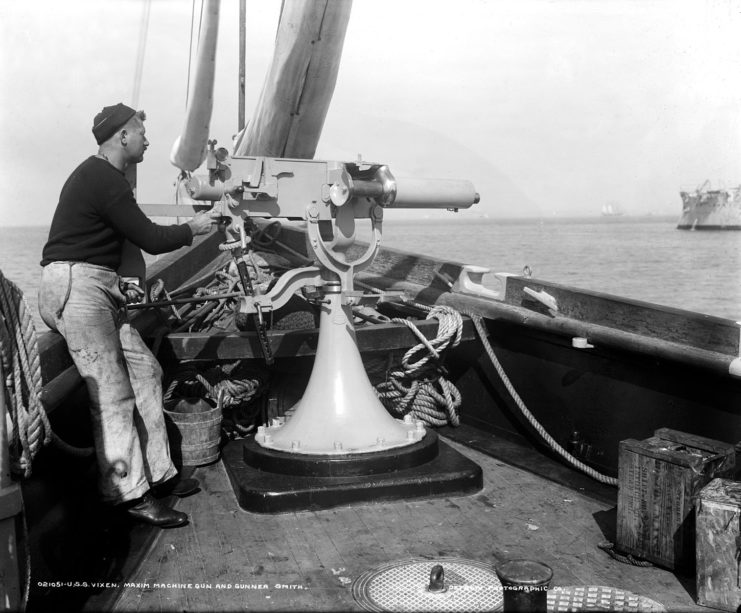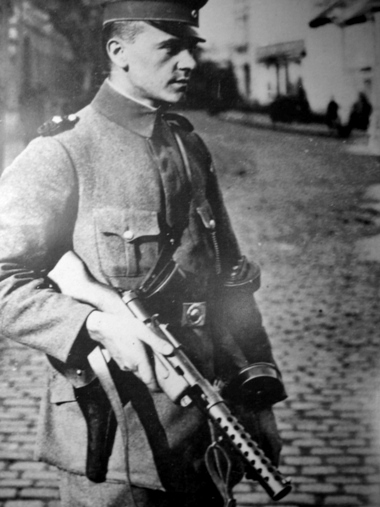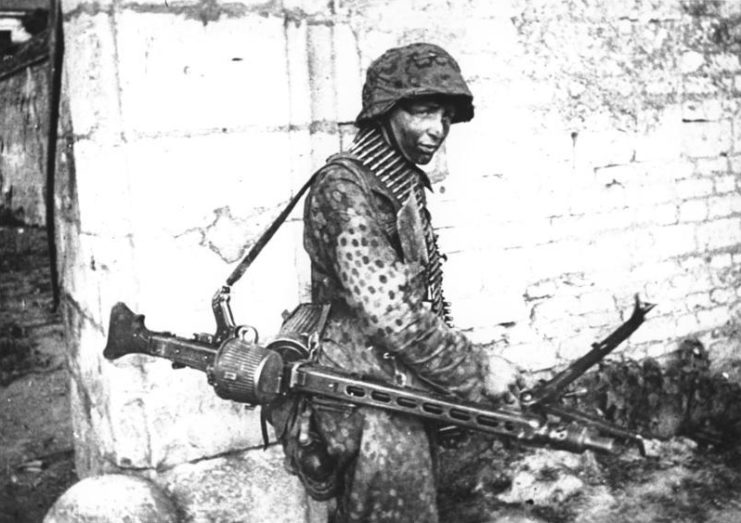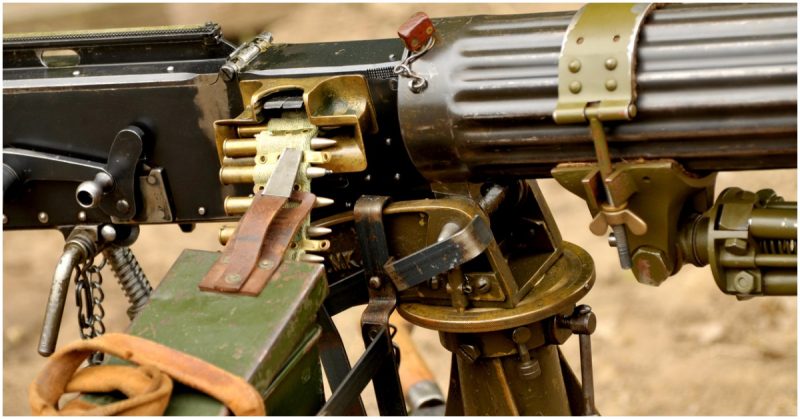For nearly as long as there have been guns, military thinkers have looked for ways to make them fire faster. In the late 19th century, their dreams became a reality with the development of the machine-gun. Over the following one hundred years, it evolved until it was in use in every corner of the battlefield. Along the way, it changed the face of war.
Early Machine-Guns
The first use of functional machine-guns came in the 1860s, during the American Civil War.
The Gatling and Williams guns showed two different approaches to a rapid-fire weapon. The Williams fired heavier 1.57-inch caliber bullets. Every shot was high impact. It was such a substantial piece of equipment that it needed an artillery carriage.
The Gatling, on the other hand, fired a 0.57-inch slug. It made up for its less substantial ammunition by being portable and maintaining a high rate of fire.
They were not yet war-winning weapons, but they had made their presence felt. The competition between them paved the way forward for machine-guns. The lighter Gatling became more popular after the war, beginning a pattern in which portable machine-guns proved to be the most useful.
In the decades that followed, other nations followed the Americans in developing machine-guns. The French first tried the disappointing Mitrailleuse before moving to the Hotchkiss gun. The British adopted the designs of Hiram Maxim. Many others adopted or adapted Maxim’s design, while the Danish Madsen and the Italian Perino came up with their own excellent designs.
It was an era of innovation, in which experimental designs were produced, tested on the field of war, and often abandoned for something better.

WWI: The Machine-Gun War
Although there were many signs of where war was headed before 1914, it was WWI that brought together technological trends into a new type of horror.
The machine-gun was the defining weapon of the war. It’s devastating firepower eliminated entire units in the bloody fields of no man’s land. For three long years, its superiority as a defensive weapon undid all the offensive potential of heavy artillery and rifle-armed infantry. The Western Front was bogged down in a massive two-way siege.
Heavy machine-guns dominated, holding off waves of attackers from their defensive nests. As the war progressed, however, light machine-guns emerged into the action. More portable than the older models, they could be brought forward to support advancing troops. It made them crucial in fending off counter-attacks once trenches had been taken.
In the final year of the war, came another change. This time, it was the Germans who showed the way forward for machine-guns. Instead of providing all their infantry with light machine-guns, they created special assault units. Known as Stormtroopers, they were equipped with plenty of grenades and a new type of weapon – the MP18 sub-machine gun.
With plenty of portable automatic firepower, German stormtroopers smashed through the Allied lines. Eventually running out of steam, they lost the war, but they had won the race to define the future of combat.

Going Portable
The inter-war period saw armies trying to replicate or even exceed the firepower of the German stormtroopers.
The main focus of the work was on sub-machineguns. Firing pistol caliber ammunition, they lacked the range and power per shot of a light machine-gun or even a rifle. However, they allowed troops on the move to fill the air with lead, turning automatic fire into an assault weapon. Fire-power once again encouraged attack, not defense.
Machine-guns continued to be important support weapons. Although some heavy models remained, they were mostly the earlier light machine-guns – portable weapons that could advance with rifle-armed infantry.
Mass production and reliability were paramount, and once again the Germans led the way. Their MG34 was a high-performance and dependable weapon. When the MG42 provided a cheap, easy to produce version, it became the best gun in the field.
Toward the end of WWII, the Germans introduced the logical conclusion of those trends. It was a weapon that in some senses eclipsed the machine-gun; the assault rifle. First widely used in 1944, the StG44 was a powerful and adaptable weapon for the ordinary infantryman. A selector switch let the user choose between automatic fire for close-range combat and single shot for long-range accuracy.

Lighter, Faster, Cheaper: The Machine-Gun After WWII
In the post-war world, assault rifles and sub-machineguns put automatic fire in the hands of every infantryman. Cheap, portable, easily maintained weapons such as the AK47 spread around the world. In such a climate, was there still a place for the machine-gun?
The answer proved to be a resounding yes. Machine-guns maintained their place as squad support weapons, allowing specially equipped soldiers to produce heavier firepower. Machine-guns were also mounted on tanks and helicopters, where the vehicles gave them greater portability without slowing down a man on foot.
The emphasis continued to be on the same features that had led to the assault rifle – reliability, portability, and cheap production. The Belgian MAG, introduced in the 1950s, was a reliable weapon with a variable rate of fire that proved both practical and popular.
During the Cold War, forces on both sides of the Iron Curtain moved towards standardized ammunition, so their troops could share supply chains. They also moved toward lighter ammo. Advances in propellants and gun design allowed smaller bullets to have as much impact as heavier ones once had. Going smaller let a soldier carry more rounds, and so have a greater impact on the move.
The history of machine-guns is far from over. They remain powerful defensive and support weapons. Their influence has led to the assault rifle and the sub-machine gun. Due to their technology, every war zone in the world now contains an AK47 or something of its ilk.
We have come a long way from the competition between the Williams and Gatling guns.
Sources:
Christopher Chant (1986), The New Encyclopedia of Handguns
William Weir (2006), 50 Weapons that Changed Warfare
